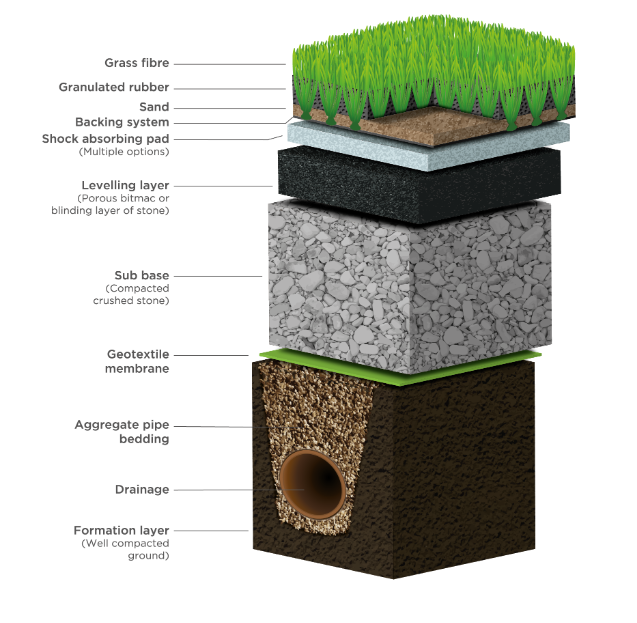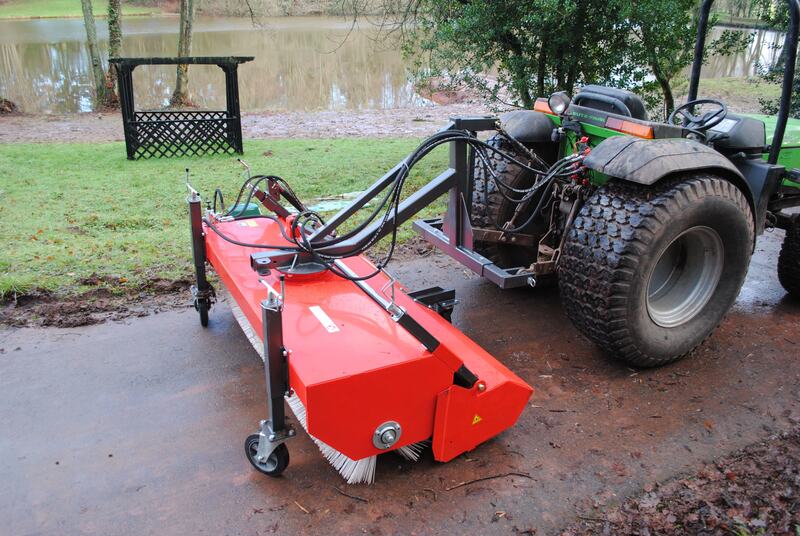The 3 Biggest Threats to Surface Performance
The three biggest threats to the performance of any surface are surface compaction, detritus build up and surface displacement.
What is surface compaction and why is it significant?
Surface compaction will occur because traffic has exerted excessive pressure on the surface and the contents of the surface have bonded more than they should under the pressure. This mainly leads to poor drainage, where surfaces that should be porous no longer allow water through.
What is the matter with detritus build up?
Detritus is made up of debris from trees, hedges, grass cuttings , litter and any other debris that should not be on the surface. This will block up the surface, affecting drainage and also rots down to provide a nutrient rich soil for weeds and moss to grow in.
Why is surface displacement a problem?
This is movement of the filling from one part of the surface to another, causing the surface to become uneven, with bare spots and mounds. Pedestrian and vehicular traffic will find it much more difficult to use the surface.
General Principles
1. Performance Properties of hard surfaces
Most surfaces are designed to accomplish a specific set of objectives. To do this the surface will have been built with several properties that allow it to perform certain functions and achieve the objectives. These objectives are usually a mix of some of the following;
1. Supporting the weight of traffic using the surface.
2. Providing grip for surface users
3. Removing surface water quickly to prevent flooding
4. Providing a safe environment for users.
5. To look great (providing kerb appeal)
Each surface type is unique and has its own mix of characteristics, but they can all be assessed in a similar way. When maintaining a surface we need to consider all the functions that the surface is performing and look to maximize its ability to do each of them.

picture credit: https://www.sispitches.com/
2. Threats to Performance of Hard Surfaces
Each surface has a variety of threats to its performance properties. These threats are the things that will gradually reduce the performance of the surface over time. Sometimes the threat will be obvious, but other times it will be less easy to see until the surface is failing to achieve its objectives. On the whole there are usually only three core threats to performance that we must keep in check.
- Surface Compaction
- Detritus Build Up
- Surface Displacement
picture credit; https://aces.nmsu.edu/pubs/_circulars/CR672/welcome.html
3. Prevention of Threats
Once we have established the performance properties of the surface and identified the threats to these, we can establish a maintenance plan that minimizes or eliminates the threats throughout the year. Preventative maintenance is usually quite simple and not overly time or equipment intensive. In many cases it can be done with a rake, sweeper, blower and a set of loppers.
4. Remedial Work
Remedial work is a different story. It is usually much more time consuming and takes much heavier tools and machinery.
Remedial work is only necessary when the preventative measures have been neglected. Over time this allows the threats to take hold. Symptoms such as puddles and detritus become serious problems such as flooding, ditching and a jungle of weeds; rendering the surface incapable of achieving its objectives. Even when we get to that stage, it is usually possible to regain surface performance by carrying out remedial work.
The same principles apply to all surfaces. Different machinery may be required on some surfaces, but it is still a case of treating the same three threats; surface compaction, detritus build up and surface displacement. Treating symptoms on their own; such as removing the water from flooding, or killing the weeds with herbicide does not treat the root cause of the problem, so the symptoms will inevitably persist.

Applying the Principles of Surface Maintenance
Each outdoor surface has its own set of performance properties and the same threats apply to lesser or greater degrees in all of them. Therefore we can prevent these threats from becoming established problems by implementing similar maintenance plans for a variety of surfaces, simply tweaking the plan to suit each one. To develop your strategies it is helpful to identify;
1. the specific performance properties of different surface types
2. the potential threats to those properties
3. preventative maintenance procedures that will keep the surface performing at its best.
Finally, you can consider the remedial measures which can be taken when preventative measures have been neglected and the surface is no longer able to perform its functions. It is our aim to better inform grounds maintenance staff across the UK, so together we can create a great environment. We know from customer studies that implementing these kinds of integrated weed control programmes can dramatically reduce the complaints about weeds and poor surfaces (Edinburgh Council Transport and Environment Committee, 2017) so there are big social consequences to getting it right.
Like this Blog? Find out more by reading our surface maintenance handbook;
https://kerstenuk.com/files/Kersten-surface-maintenance-handbook-catalogue.pdf
No comments yet. Login to start a new discussion Start a new discussion